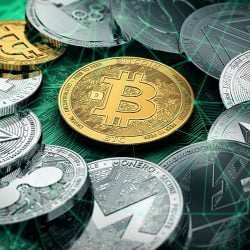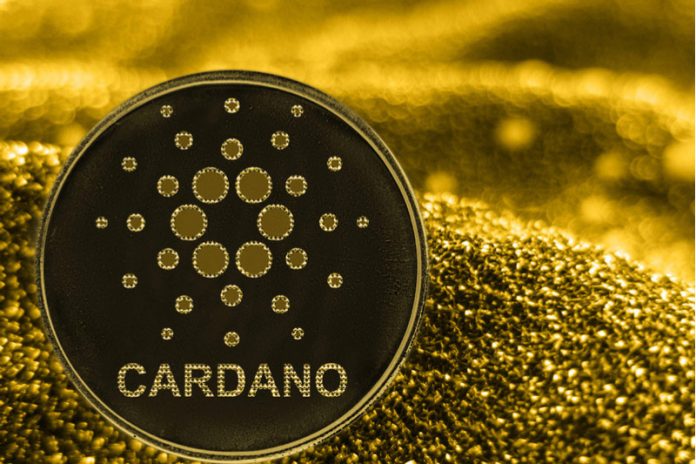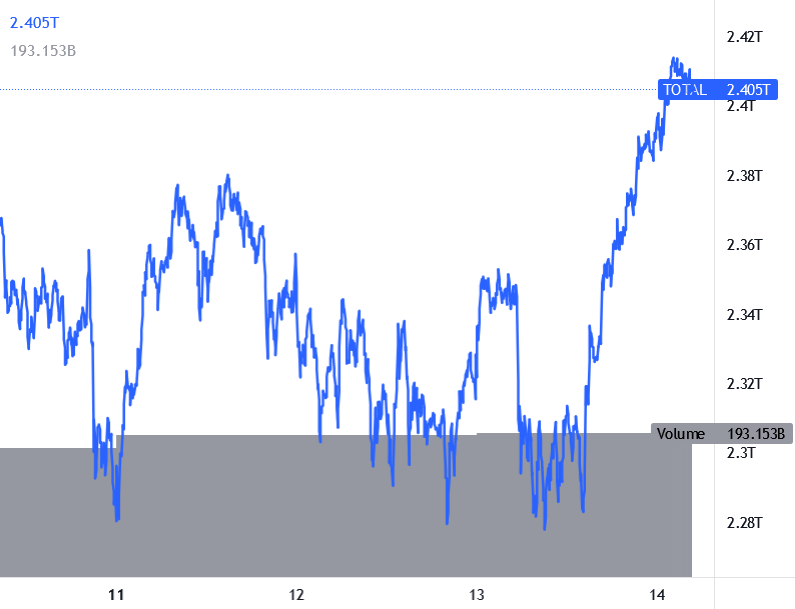Africa is home to the world’s smallest cryptocurrency economies, but is also one of the fastest-growing regions for crypto adoption. Because cryptocurrencies promise a swift, convenient, and efficient means of investment, cross-border payments, and remittances, they attract many adopters in the continent.
That draw is also proving lucrative ground for scams. Over the past few years, many cryptocurrency swindles have been reported in different African countries, leading to millions of dollars in losses for investors who were originally promised high returns. Last year, the global value of illicit cryptocurrency activity, including scams, was $10 billion, according to Chainalysis, a platform that provides blockchain data.
As cryptocurrency adoption gains steam on the continent, it will be important for potential investors—and ultimately, regulators—to learn from the scams that have come before.
How cryptocurrency scams work
The anonymous, unregulated nature of cryptocurrency—often among its selling points—is also what makes crypto popular with scammers. It helps that investor education on digital currencies is minimal.
The specifics vary, but most of these scams fit familiar tropes: pyramid schemes, Ponzi schemes, and exit scams that capitalize on the “get rich quick” potential of cryptocurrencies. Others present themselves as cryptocurrency membership networks providing high returns: Customers hand over money to be “invested” in cryptocurrencies, and then the soliciting companies shut down, with their owners nowhere to be found.
Some high-profile examples of these scams include Velox 10 Global, a pyramid scheme with roots in Brazil, in which Kenyans lost millions of shillings in 2018 and 2019. Claiming to trade in bitcoins, the company charged a membership fee of about $100 and told members they could earn up to $4,000 daily by paying an additional upgrade amount of $200. Investors never received those returns, and some took the company to court seeking to have it stopped from operating in Kenya.
Also in 2019, Uganda’s Dunamiscoin Resources closed suddenly with $2.7 million in investor money. In an approach similar to that of Velox 10 Global, Dunamiscoin Resources had taken money from more than 4,000 people, promising them returns of 30% returns in 21 days by investing it in bitcoin.
But nothing has brought more scrutiny to crypto on the continent than two scams out of South Africa.
With $588 million worth of bitcoin from customers, South Africa’s Mirror Trading International (MTI) may have pulled off the biggest crypto scam of 2020, according to a Chainalysis report.
Launched in 2019, MTI presented itself as an investment platform, and asked new users for at least $100 in funds in the form of bitcoin. It claimed to pool those funds into a trading account on a forex derivative trading platform, and then conduct high-frequency trading using artificial intelligence that could allegedly produce average daily returns of 0.5%.
The company also offered bonuses for referring and recruiting new members, typical of a multilevel marketing scheme. Through social media, YouTube, and those referrals, MTI grew to hundreds of thousands of users from all over the world. In 2020, it claimed to have 260,000 members globally.
Eventually, MTI attracted the attention of regulators. In July 2020, the Texas State Securities Board issued a cease and desist order (pdf) against the company for “illegally soliciting Texans to purchase fraudulent investments.” Canada and Mauritius also listed it as a fraudulent organization. Soon, MTI members started complaining that their deposits and withdrawal transactions were not appearing on their accounts.
In August 2020, South Africa’s Financial Sector Conduct Authority (FSCA) announced that it was investigating MTI (pdf) for operating a financial service without a license. The regulator also expressed concern about the high amount of funds MTI claimed it held—$200 million at the time—and its alleged returns, which “seem far-fetched and unrealistic.” It warned the public against trading with MTI because it was unlicensed.
MTI’s founder and CEO, Johann Steynberg, defended the company’s operations. “It is no secret that we are getting pressure from a variety of facets, but I always knew MTI would attract attention,” he told investors (pdf) in November 2020. “[Our] vision is big, and I am confident it scares many people.”
A month later, the FSCA opened a criminal case with the South African police against MTI. The company was provisionally liquidated in December 2020, and Steynberg disappeared that same month, reportedly fleeing for Brazil. The company was placed in final liquidation in June 2021. Now, the FBI is helping liquidators to recover funds for investors, who come from countries that include Canada, Namibia, South Africa, India, Nigeria, Spain, the US, and the UK.
In the end, MTI was not making the returns it claimed. FXChoice, a company that MTI mentioned as its forex broker in its marketing material, said in August 2020 that it had blocked MTI’s account. FXChoice said it discovered MTI was violating the rules of the platform by claiming it was trading with its own money while actually using funds pooled from clients. FXChoice also said MTI wasn’t using AI for trading; it was executing trades manually, and incurring “substantial losses.”
“Paying out such a consistent stream of profits, which is nearly a 100% return on investment in one year, to investors by trading Forex is hard to believe,” FXChoice wrote in a statement.
MTI later said it had moved to a new broker called Trade300. But this company’s existence is in doubt and the FSCA suggests it is actually the property of Steynberg, MTI’s founder and CEO.
The Africrypt “hack”
In one of history’s biggest cryptocurrency heists, two brothers who founded a crypto investment platform vanished with bitcoin valued at an approximated $3.6 billion.
South Africa-based Africrypt was founded in 2019 by brothers Raees Cajee, 21, and Ameer Cajee, 18. The company claimed it used a trading platform driven by artificial intelligence to invest money (sound familiar?) While MTI solicited bitcoin from clients, Africrypt asked users to deposit money, which it then use to buy bitcoins. By early 2021, it had around 69,000 bitcoins, valued at $3.6 billion.
In April 2021, Ameer (the company’s chief operating officer) told people who invested their money in the platform that Africrypt’s system has been hacked, and its funds stolen. Ameer asked them not to report the incident to authorities, saying it may interfere with the recovery of the money. Later that month, Raees and Ameer disappeared.
Some investors hired a law firm to help them find out what happened to their money, while others started a liquidation process to get their funds back. Africrypt employees had lost access to the company’s back-end platforms seven days before the reported hack, a lawyer for the first group told Bloomberg. The law firm found that the company’s funds were transferred from its South African accounts and client wallets, and the coins went to other large bitcoin pools to make them untraceable, Bloomberg reported.
The brothers, suspected to have spent time in Tanzania, the UK, and the UAE, have denied wrongdoing. They also dispute the $3.6 billion amount; at the height of the market, Africrypt was managing just over $200 million, Raees told The Wall Street Journal, and less than $5 million is missing. Raees said he and his brother are in hiding because they received death threats.
Africrypt was placed into provisional liquidation in April; last month, a South African court granted the liquidators the authority to trace the missing investor funds and to sell the company’s assets.
The lesson of crypto scams
As long as cryptocurrencies are unregulated in South Africa and other African countries, it’s difficult for authorities to rein in rogue actors. But South Africa is starting to take regulatory steps. Earlier this year, South Africa’s Intergovernmental Fintech Working Group, a team tasked with regulating the country’s cryptocurrency space, published a position paper making recommendations for regulation. They include recognizing cryptocurrency assets as financial products, therefore putting them under the country’s financial laws, and increasing campaigns on digital financial literacy, including on cryptocurrency assets.
Investors can also educate themselves before putting money into a crypto platform. For example, they can find out the backgrounds of the people behind the platform, where its assets are kept, and whether the exchange is registered with a regulator.
But until stricter regulatory initiatives take hold in South Africa and around the world, the very nature of cryptocurrencies will continue to present an opportunity for scammers to take advantage of people, says Michael Kimani, a Nairobi-based blockchain analyst.
“These multi-level schemes play in a gray area that exists because the regulators have not stepped in and clearly defined some rules,” he says. “So these things are happening and no one can come and tell you this is clearly a scam or this is not a scam. There’s no authority to go to.”
Advertisement












